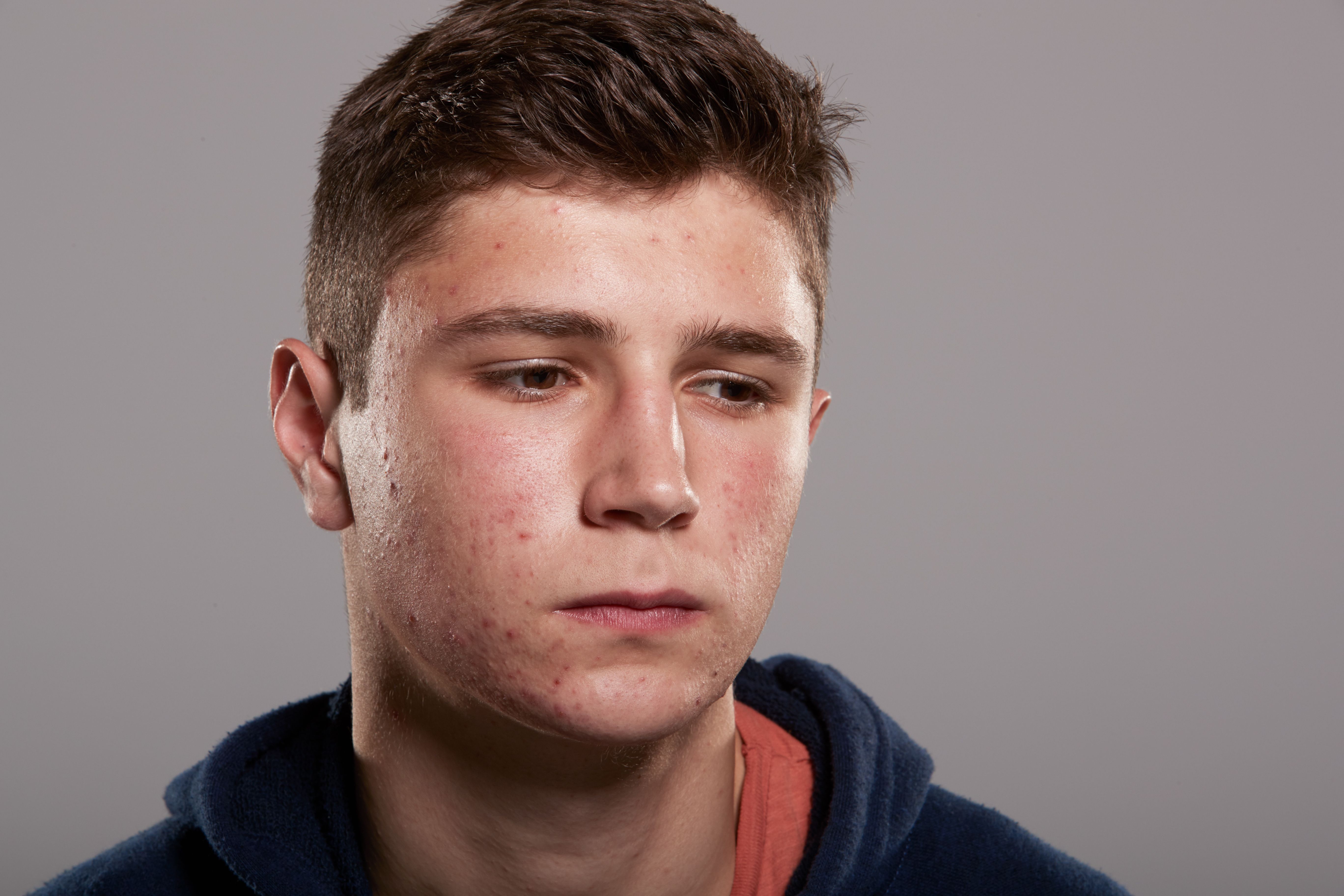Triple-combination topical treatment effective for acne in pediatric participants
A recent analysis showed that a combination treatment made of phosphate, adapalene, and benzoyl peroxide known as IDP-126 was well-tolerated and effective in pediatric participants with acne.
Teenager with acne | Image Credit: © Monkey Business - © Monkey Business - stock.adobe.com.

A new, fixed-dose topical treatment made of a combination of phosphate 1.2%, benzoyl peroxide 3.1%, and adapalene 0.15% treatment—given the title of IDP-126—saw positive results in patients up to 17 years of age with moderate-to-severe acne, according to recent findings.1
This post-hoc analysis was conducted to examine potential improvements made in acne treatments for pediatric participants, with the improvements having involved several combined topical treatments that targeted multiple pathogenic factors.
This increase in complexity of treatment and consequent potential for more adverse events was acknowledged by the study’s investigators. Their research was authored by Lawrence F. Eichenfield, MD, from the Departments of Dermatology and Pediatrics at University of California, San Diego’s School of Medicine.
“Topical clindamycin phosphate 1.2%/benzoyl peroxide 3.1%/adapalene 0.15% gel (IDP-126) is the first fixed-dose triple-combination formulation in development for acne,” Eichenfield and colleagues wrote. “This post hoc analysis investigated efficacy and safety of IDP-126 in children and adolescents with moderate-to-severe acne.”
Background and Findings
The investigators post-hoc analysis was conducted on the data obtained from a phase 2 study evaluating the effectiveness of once-per-day IDP-126 treatment for moderate-to-severe acne in individuals.2 The study included 3 other dyad combination gel treatments and a vehicle gel as part of the randomization process, with a total of 394 study participants.
The original study examined the success of the treatments, inflammatory and non-inflammatory lesion counts, the Acne-Specific Quality of Life questionnaire (Acne-QoL), treatment-emergent adverse events, and cutaneous safety as well as tolerability.
The research team’s post-hoc analysis assessed patients ages 10 to 17, with the intent-to-treat (ITT) population including all randomized participants who had been given the study drug and the safety population having been given the study drug a minimum of one time with a ≥1 post-baseline evaluation of safety.
Overall, the post-hoc analysis of these pediatric participants showed that after 12 weeks of treatment, IDP-126 led to a substantially higher treatment success rate of 55.8% compared to the vehicle’s 5.7% rate.
This rate of success was also higher than that of the other dyad combinations (range: 30.8% to 33.9%). Additionally, the investigators noted that the study drug resulted in greater reductions in both inflammatory (78.3% versus 45.1%) and in non-inflammatory lesions (70.0% versus 37.6%) compared to vehicle and the other dyad combinations (9.2% to 16.6% greater reduction).
The team added that improvements from baseline in Acne-QoL domain scores were found to be generally higher in the IDP-126 study arm than each of the other treatment arms. They lastly noted that the most common treatment-related adverse events were mild-to-moderate application site dryness and pain, and these effects were observed across all arms of the study.
“The efficacy and safety profile of IDP-126—the only fixed-combination acne medication in development containing three recommended treatments for once-daily use—demonstrates its potential as an effective acne treatment option,” they wrote.
Reference
- Eichenfield, LF, Stein Gold, L, Kircik, LH, et al. Triple-combination clindamycin phosphate 1.2%/benzoyl peroxide 3.1%/adapalene 0.15% gel for moderate-to-severe acne in children and adolescents: Randomized phase 2 study. Pediatr Dermatol. 2023; 1- 8. doi:10.1111/pde.15283.
- Stein Gold L, Baldwin H, Kircik LH, et al. Efficacy and safety of a fixed-dose clindamycin phosphate 1.2%, benzoyl peroxide 3.1%, and adapalene 0.15% gel for moderate-to-severe acne: a randomized phase II study of the first triple-combination drug. Am J Clin Dermatol. 2022;23(1):93-104.
This article was initially published by our sister publication HCP Live.
Recognize & Refer: Hemangiomas in pediatrics
July 17th 2019Contemporary Pediatrics sits down exclusively with Sheila Fallon Friedlander, MD, a professor dermatology and pediatrics, to discuss the one key condition for which she believes community pediatricians should be especially aware-hemangiomas.